Weaver's
Music
Elgin IL
847-741-8418
Guitar Amplifiers
RMS SERIES
RMSG12
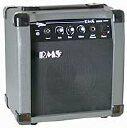
12 Watts RMS-6.5" Speaker
Control Functions
-
Drive
-
Input
-
Gain
-
Tone
-
Volume
-
Headphone Jack
List $ 99.00
Weaver's $ 89.00
|
RMSG20
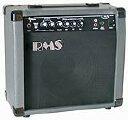
20 Watts RMS-8" Speaker
Control Functions
-
Input
-
Channel Select Clean or Overdrive
-
Gain Control for Overdrive
-
Vol. 1 (Overdrive)
-
Vol. 2 (Clean)
-
Clean Channel High, Med., Low
-
CD/Line In
-
Headphone Jack
-
Footswitch Jack
-
External Speaker Jack
-
Line Out
Dimensions:
13.25 High
15" Wide
7" Deep
List $139.00
Weaver's $109.00
|
RMSG20R
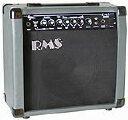
20 Watts RMS-8" Speaker
Control Functions
-
Input
-
Channel Select Clean or Overdrive
-
Gain Control for Overdrive
-
Vol. 1 (Overdrive)
-
Vol. 2 (Clean)
-
Clean Channel High, Med., Low
-
CD/Line In
-
Headphone Jack
-
Footswitch Jack
-
External Speaker Jack
-
Line Out
-
W/Reverb
Dimensions:
13.25 High
15" Wide
7" Deep
List $169.00
Weaver's $139.00
|
RMSG40
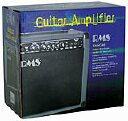
40 Watts RMS-10" Speaker
Control Functions
-
High Input
-
Low Input
-
Channel Select Clean or Overdrive
-
Gain Control for Overdrive
-
Vol. 1 (Overdrive)
-
Vol. 2 (Clean)
-
Clean Channel High, Med., Low
-
CD/Line In
-
Headphone Jack
-
Footswitch Jack
-
External Speaker Jack
-
Line Out
-
W/Reverb
Dimensions:
16.5" High
16.75" Wide
8.75" Deep
List $229.00
Weaver's $$179.00
|
RMSG80
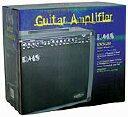
80 Watts RMS-12" Celestion Spkr.
Control Functions
-
Input Channel 1-Gain, Voice, Low, High, Vol., Presence
-
Input Channel 2-Gain On , Bass, Mid., Treble, Volume
-
CD/Line In
-
Headphone Jack
-
Footswitch Jack
-
External Speaker Jack
-
Line Out
-
W/Reverb
Dimensions:
20.0" High
20.0" Wide
10.5" Deep
List $319.00
Weaver's $249.00
|
Bass Guitar Amplifiers
RMS SERIES
RMSB20
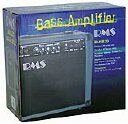
20 Watts RMS-8" Speaker
Control Functions
-
Hi & Low Imputs
-
Vol. High, Med,, Low
-
Presence
-
CD/Line In
-
Headphone Jack
-
Line Out
Dimensions:
13.5" High
15" Wide
8.75" Deep
List $139.00
Weaver's $119.00
|
RMSB40
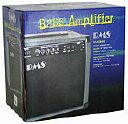
40 Watts RMS-10" Speaker
Control Functions
-
Hi & Low Imputs
-
Vol. High, Med,, Low
-
Presence
-
CD/Line In
-
Headphone Jack
-
Line Out
Dimensions:
17.5" High
16.75" Wide
11.75" Deep
List $229.00
Weaver's $179.00
|
RMSB80
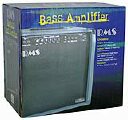
80 Watts RMS-12" Celestion Speaker
Control Functions
-
Hi & Low Imputs
-
Gain
-
Vol. High, Med,, Low
-
Presence
-
CD/Line In
-
External Speaker Jack
-
Headphone Jack
-
Line Out
Dimensions:
20.0" High
20.0" Wide
13.5" Deep
List $349.00
Weaver's $279.00
|
Acoustic Guitar Amplifiers
RMSAC40
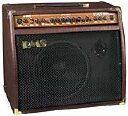
40 Watts RMS-10' Woofer @ 2" Tweeter--Control Functions:
-
2 Channels w/sep. Vol. Control
-
Channel 1-3 pin Mic. In 1/4" Line In-CD In
-
Channel 2- 1/4" Guitar In-Active/Passive Electronics Sel.
-
3 band EQ
-
Reverb on/off & control
-
Chorus on/off & control
-
Effects Loop
-
Line Out
Dimensions:
20.0" High
23.0" Wide
15.0" Deep
List $229.00
Weaver's $179.00
|
Return to Guitar Page Click Here
Return to Merchandise Page Click Here
Return to Home Page Click Here
If you have any questions Weaver's Music can be
contacted by phone at 847-741-8418 or by email.
Weaver's Music will only ship product to addresses
in the United States of America.
For things you need to know to properly select the
right amp.:
Click Here
Terms you need to know to select
an amp!
Limiter
The limiter is provided to protect
your amp and your speakers. It keeps the power amp from clipping, while
maintaining full power without distorting the signal.
Pre/post Line Out
Players can use this to bypass
the internal EQ and power amp of their rig, sending a balanced signal to
a mixing console. By running a signal directly from the amplifier into
the mixing console, clarity (and especially lower frequencies) are not
lost to post-speaker milking.
Contour Circuit
This is an effect that will adjust
the midrange frequencies, both in terms of midpoint and level. "Shifting"
them up or down, players can dial in a wide variety of tones more quickly
than setting each individual frequency.
Effects Loop
The effects loop gives you ability
to "mix" an external device into the overall sound that your amp produces.
Most effects loops consist of a SEND jack and a RETURN jack. The SEND jack
is the outgoing signal from your amp and goes to the input jack of your
effects processor. The return jack is for the incoming signal and comes
from the output jack from your effects processor. (See your owner's manual
for more information).
Slant Front Cabinet
The cabinet is slanted to provide
the clearest tone for players and listeners. It points the speakers and
especially the tweeter, toward ear level and projects the higher frequencies
toward the head.
Ground Lift
A ground lift is used to eliminate
ground loops that could occur in a multi-input/output situation, such as
a CRATE acoustic amp with multiple channels. Essentially, the ground lift
eliminates hum and provides a cleaner tone.
Feedback Notch
Because of the highly resonant
properties of certain instruments (especially acoustic instruments) they
are inclined to feed back into the amplifier very easily. The feed back
elimination circuit de-emphasizes certain frequencies that tend to create
a "squeal" or "feedback loop". This provides players a much higher level
of clarity when practicing or performing at high volume levels.
Phantom Power
Some microphones (condenser) require
a small amount of power to operate. These mics utilize external "phantom"
power to operate at their optimum level. This feature supplies that required
amount of power to selected jacks. Check your microphones to see if they
require phantom power and/or an internal battery.
Digital
A digital amp uses a "model" of
a real or live amp sound.
Ohms
A few other terms that are tossed
around quite a bit but which are not often known are ohms, impedance, parallel,
series, RMS, watts and power rating. Most of the terms are used when describing
an amp's power and speaker characteristics. Speakers have an impedance
which is measured in ohms, derived from Ohm's Law which formulates the
relationship between voltage, current and resistance. Impedance is defined
as the resistance of an alternating current. Amplifiers are designed to
work best at a specified impedance: the amp and speakers should operate
at the same ohms. An impedance mismatch in a tube amp can result in damage
to the output transformer (it may even burn up). A mismatch in a solid
state amp would result in possible distortion while the amp would not be
operating at maximum power.
A solid state amp features
integrated circuits, or "chips" and transistors. An integrated circuit
features many transistors on one chip. Like computers and other electronic
products, a circuit board houses the "chips" and connections necessary
for the amp to operate. Like tube amps, solid state amps have both a preamp
and a power amp; however, the power amp section is wired directly to the
speaker eliminating the need for an output transformer
Currently, many solid state amps
feature MOSFETs (a solid state device) in the power amp section
which offer tube-like sound without using actual tubes.
Tubes
Prior to the 1950's, electronic
products such as amplifiers and radios operated on vacuum tube technology.
Tube amps have a number of tubes which contain a lot of scientific stuff
like plates, grids and cathodes which end up moving energy around resulting
in sound reproduction. Now keep in mind, the scope of this article is a
primer about amps and the sonic differences that result. For a really in-depth
look at tubes and how they work, check the Internet, library or bookstore
for a variety of books written on the subject.
A guitar amp has a preamp section
and a power amp section.
The preamp section is where
the signal from your guitar is processed and where the sound shaping begins.
Typically, a smaller tube, often a 12AX7, is used in the preamp section
of an amplifier. The power amp section receives a weak signal from the
preamp and turns it into a stronger signal with enough power to send it
to the speakers. The tubes found in the power amp section are physically
larger than preamp tubes and may be of a wide variety with different tubes
producing different results. Other items found in tube amps that
are equally as important to the preamp and power amp sections are transformers
and the power supply. The output transformer takes the signal inside
the amp and "transforms" it into something the speaker can accept. Without
an output transformer, the power amp section and speakers would not be
able to communicate. Almost all tube amps have two transformers: the previously
mentioned output transformer and a power supply transformer which
takes the alternating current (AC) from the wall and converts it to different
levels of voltage for powering the various components. (see inset picture-picture
of black box and then shot of inside of transformer). The power supply
transformer is part of the power supply and is the heart of what actually
power the amp.
Watts
When searching for an amp, you
will invariably hear the terms watts and RMS. Power is expressed in watts;
the more watts, the more power and the louder the amp is. There are different
ways of expressing watts, the most common being an RMS power rating.
This acronym stands for Root Mean Square which is a fancy mathematical
expression for a way of measuring power. When comparing the power of two
amps, it is important to compare the same power ratings; with amplifiers,
the most common is RMS.
Whether a tube or solid state
amp, what objectives would you like to meet with your amp purchase? Sound,
price, size and weight, features, power ...there are many factors that
determine the amp you will buy.
Return to Top of Page



